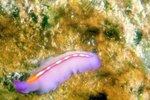Manure: It smells, it's unpleasant to see and it certainly isn't dinner table conversation. But it's something that both animals and humans produce. There are several differences between human and animal manure in terms of quantity and composition. Also, while human manure is merely flushed away, there are beneficial uses for many types of animal manure.
Quantity
One major difference between humans and animal feces is how much of it is produced. For example, according to OnlineSchools.org, the average human eliminates 2 pounds of waste per day. This is a stark contrast to animals such as elephants that eliminate up to 80 pounds per day. Farm animals such as pigs defecate 12 pounds per day and cattle eliminate 92 pounds per day.
Fertilization
Horse, cow, goat, sheep and rabbit manure can be used as a means of fertilization. Because these animals are all plant-eaters, their manure is high in nutrients and organic matter, which can help stimulate the growth of crops and grass. For example, cow manure can be used as a top dressing for crops and for soil improvement. According to Plantea.com, anywhere from 75 percent to 90 percent of the plant nutrients fed to animals are excreted in their manure. Manure of meat-eating animals such as dogs should not be used as fertilizer because it can contain harmful bacteria and parasites.
Edible
If a human were to eat manure, whether it be his own of that of an animal, it could make him very sick. However, hamsters have a different digestive system than humans and most other animals. Therefore, it's common to see them eating their own feces. This is because the digestive system of a hamster produces two types of excrement: one that's full of nutrients and one that's primarily waste. It's common to see hamsters eating the nutrient-filled feces to obtain the nutrients and fully digest them, according to Hamster Hideout.
Composition
According to OnlineSchools.org, 75 percent of human manure is water. The remaining 25 percent is composed of indigestible fiber, dead bacteria and living bacteria. Because there's bacteria in human feces, there's a risk that it could be carrying parasites or harmful organisms, which is why it's flushed away. Comparably speaking, cow manure contains plant nutrients that can be reused for other purposes. It also contains animal tissues and minerals that can also provide fertilization benefits.
References
Photo Credits
-
Jupiterimages/Photos.com/Getty Images





